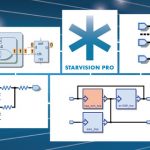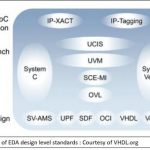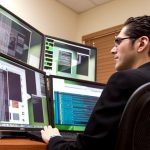Verific is an unusual company. They are completely dominant in what they do – providing parsers for Verilog/SV, VHDL and UPF. Yet they have no ambition to expand beyond that goal. Instead, per Michiel Ligthart (President and COO), they continue to “sharpen the saw”. This is an expression I learned in sales training, habit #7 from… Read More
Tag: verilog
Why I made the world’s first on-demand formal verification course
Verification Challenge
As chip design complexity continues to grow astronomically with hardware accelerators running riot with the traditional hardware comprising CPUs, GPUs, networking and video and vision hardware, concurrency, control and coherency will dominate the landscape of verification complexity for safe … Read More
Webinar: Designing Complex SoCs and Dealing with Multiple File Formats
In SoC design it’s all about managing complexity through modeling, and the models that make up IC designs come in a wide range of file formats like:
- Transistor-level , SPICE
- Interconnect parasitics, SPEF
- Gate and RTL, Verilog, VHDL
Even with standard file formats, designers still have to traverse the hierarchy to find out… Read More
Foundational Excellence in a Laid-Back Style
I recently had a call with Rob Dekker, Founder and CTO of Verific. If you’re in EDA or semiconductor CAD, chances are high that you know who they are. They’re king of the hill in parser software for SystemVerilog and VHDL. When you hear a line like that, you assume a heavy dose of marketing spin, but here it really is fact. I don’t know of… Read More
Design Automation and the Engineering Workstation
This is the seventeenth in the series of “20 Questions with Wally Rhines”
Several common aspects have existed for what is now the modern Electronic Design Automation (EDA) industry. When I joined TI in 1972, the company was very proud of its design automation capability as a competitive differentiator. Much of the… Read More
CEO Interview: Cristian Amitroaie of AMIQ EDA
AMIQ EDA has caught my attention over the last few months. My first impression was that this was just another small IDE company trying to compete with established and bundled IDEs from the big 3, a seemingly insurmountable barrier. This view was challenged by an impressive list of testimonials, not just from the little guys but also… Read More
Why Open and Supported Interfaces Matter
Back in the early 1980’s during the nascent years of electronic design automation (EDA), I worked at Texas Instruments supporting what would become their merchant ASIC business. Back then, life was a bit different. The challenge we faced was to make our ASIC library available on as many EDA flows as we could to give as many users as… Read More
Making Functional Simulation Faster with a Parallel Approach
I’ll never forgot working at Intel on a team designing a graphics chip when we wanted to simulate to ensure proper functionality before tapeout, however because of the long run times it was decided to make a compromise to speed things up by reducing the size of the display window to just 32×32 pixels. Well, when first silicon… Read More
RTL Design Restructuring Explained
Modern SoC designs can use billions of transistors where transistors are grouped into gates, then gates grouped into cells, then cells grouped into blocks, blocks grouped into modules, and so on, creating a complex hierarchy. What a front-end designer conceives of logically for a hierarchy will differ from how an optimized physical… Read More
Dragging RTL Creation into the 21st Century
When I was at Atrenta, we always thought it would be great to do as-you-type RTL linting. It’s the natural use model for anyone used to writing text in virtually any modern application (especially on the Web, thanks to Google spell and grammar-checks). You may argue that you create your RTL in Vi or EMACS and you don’t need no stinking… Read More










